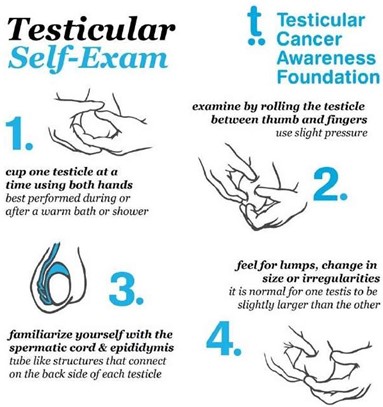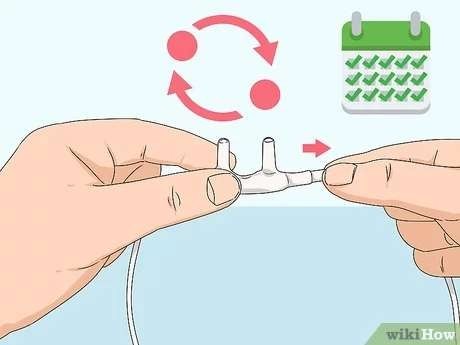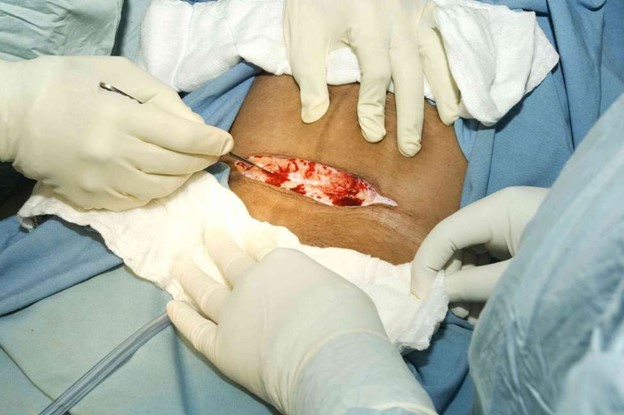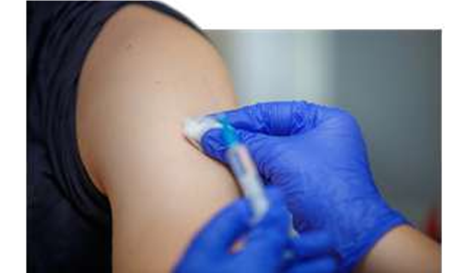PN Capstone Proctored Comprehensive Assessment 2020 B
ATI PN Capstone Proctored Comprehensive Assessment 2020 B
Total Questions : 58
Showing 10 questions Sign up for moreA nurse is caring for a client who has dementia.
Which of the following actions should the nurse take to promote communication?
Explanation
Face the client at eye level when communicating.

This is because eye contact helps to establish rapport and trust with the client who has dementia and shows respect and attention. Facing the client at eye level also reduces distractions and background noise that might interfere with communication.
Choice B is wrong because offering correction of incorrect client statements can increase confusion, frustration, and agitation in the client who has dementia. Instead of correcting the client, the nurse should acknowledge their feelings and try to understand their perspective.
Choice C is wrong because reorienting the client to date and time with each encounter can be stressful and ineffective for the client who has dementia. Reorientation may work in the early stages of dementia, but as the disease progresses, the client may lose their ability to retain new information and may become more disoriented. Instead of reorienting the client, the nurse should use orienting names or labels whenever possible, such as “Your son, Jack” .
Choice D is wrong because avoiding using gestures when communicating with the client who has dementia can limit the nurse’s ability to convey meaning and emotion. Gestures can help to supplement verbal communication and provide cues for the client who has difficulty understanding words. However, the nurse should avoid using gestures that might be misinterpreted or threatening to the client, such as pointing or waving .
A nurse is contributing to the plan of care for a client who is postoperative following a below-the-knee amputation.
Which of the following strategies should the nurse include to help the client progress toward acceptance of this body image alteration?
Explanation
Encourage the client to visit with someone who has had an amputation.

This strategy can help the client cope with the loss of a body part and learn from the experience of others who have gone through a similar situation.
Choice A is wrong because suggesting that the client wear facility clothing until the prosthesis fitting can delay the client’s acceptance of the body image alteration and increase the risk of infection.
Choice C is wrong because discouraging the client from touching the residual limb for the first week can interfere with the healing process and prevent the client from becoming familiar with the new body part.
Choice D is wrong because reassuring the client that the rehabilitation program is optional can discourage the client from participating in physical therapy and hinder the recovery and adaptation.
A nurse in a provider’s office is reinforcing teaching with a client about performing testicular self-examination.
Which of the following instructions should the nurse include?
Explanation
Examine your testicles after a warm shower.

This is because a warm shower will relax the scrotum and the muscles holding the testicles, making an exam easier. You should gently roll the scrotum with your fingers to feel the surface of each testicle and check for any lumps, bumps, swelling, hardness or other changes.
Choice A is wrong because you should perform the self-examination every month, not every 3 months.
This will help you notice any changes over time.
Choice C is wrong because you should not palpate both testicles firmly with your fingertips. You should use a gentle touch and avoid squeezing or pressing too hard.
Choice D is wrong because you should not apply a cool compress to the scrotum prior to examination. This will make the scrotum contract and tighten, making an exam more difficult.
A nurse is caring for a client who is receiving oxygen via nasal cannula at 4 L/min. Which of the following actions should the nurse take?
Explanation
Clean the cannula prongs daily.

This is because the nasal cannula can become contaminated with bacteria and mucus, which can cause infection and irritation of the nasal mucosa. Cleaning the cannula prongs daily with soap and water can prevent these complications.
Choice A is wrong because humidifiers can help moisten the dry oxygen and prevent nasal dryness and bleeding. Humidifiers should be used for oxygen flow rates higher than 4 L/min.
Choice B is wrong because the cannula prongs should be positioned curving downward in the nose, not upward. This allows for better alignment with the natural direction of airflow and reduces the risk of dislodgement.
Choice D is wrong because keeping the oxygen tubing off the floor is not a specific action for nasal cannula use. It is a general safety measure to prevent tripping and contamination of the tubing.
A nurse on a postpartum unit is caring for a group of clients. Which of the following clients is the nurse’s priority?
Explanation
A client who is 1 day postpartum and has not voided in 8 hr. This client is at risk of urinary retention, bladder distension, and infection due to the effects of epidural anesthesia, perineal trauma, and fluid shifts after delivery. The nurse should assess the client’s bladder and catheterize if necessary.
Choice A is wrong because a client who is 2 days postpartum and whose fundus is 2 to 4 cm below the umbilicus is showing a normal finding.
The fundus should descend about 1 to 2 cm per day after delivery and be nonpalpable by day 10.
Choice B is wrong because a client who is 3 days postpartum and has not had a bowel movement since prior to admission is not uncommon.
Constipation is a common problem after delivery due to decreased peristalsis, dehydration, and fear of pain.
The nurse should encourage fluid intake, fiber intake, and early ambulation to promote bowel function.
Choice C is wrong because a client who is 4 days postpartum and has lochia serosa is also showing a normal finding.
Lochia serosa is the pinkish-brown discharge that occurs from day 4 to 10 after delivery.
It consists of old blood, serum, leukocytes, and tissue debris.
A nurse is assisting with the care of a client who is in labor with ruptured membranes and has herpes simplex virus with active lesions.
Which of the following actions should the nurse take?
Explanation
Prepare the client for a cesarean birth.

This is because the client has herpes simplex virus with active lesions, which can be transmitted to the newborn during vaginal delivery and cause serious complications such as neonatal herpes infection. A cesarean birth can prevent this transmission and protect the newborn’s health.
Choice A is wrong because an amnioinfusion is a procedure that involves infusing fluid into the amniotic cavity to increase the volume of amniotic fluid and reduce cord compression.
It is not indicated for a client with herpes simplex virus with active lesions.
Choice C is wrong because ampicillin is an antibiotic that is used to treat bacterial infections, not viral infections such as herpes simplex virus.
Ampicillin will not prevent the transmission of herpes simplex virus to the newborn.
Choice D is wrong because oxytocin is a hormone that stimulates uterine contractions and can be used to augment or induce labor.
It is not indicated for a client with herpes simplex virus with active lesions, as it can increase the risk of transmission to the newborn by prolonging the exposure to infected genital secretions.
A nurse is administering the inactivated influenza vaccine to a group of clients at a health clinic.
The nurse should recognize that which of the following conditions is a contraindication for this vaccine?
Explanation

The correct answer is choice C. Allergy to gelatin is a contraindication for the inactivated influenza vaccine because gelatin is one of the ingredients in the vaccine. People with severe, life-threatening allergies to any ingredient in a flu vaccine (other than egg proteins) should not get that vaccine.
Choice A is wrong because pregnancy is not a contraindication for the inactivated influenza vaccine. In fact, pregnant people are recommended to get a flu shot because they are at higher risk of developing serious flu complications.
Choice B is wrong because immunosuppression is not a contraindication for the inactivated influenza vaccine. People with weakened immune systems can get a flu shot, but they should avoid the nasal spray flu vaccine which contains live viruses.
Choice D is wrong because moderate illness with fever is not a contraindication for the inactivated influenza vaccine. People who are moderately ill can still get a flu shot, but they should wait until they recover if they have a severe illness.
A nurse is caring for a client who is postpartum and asks the nurse why her newborn received a vitamin K injection.
The nurse should explain that the injection is administered in order to prevent which of the following complications in the newborn?
Explanation
The nurse should explain that the injection is administered in order to prevent vitamin K deficiency bleeding (VKDB) in the newborn. Vitamin K is needed for blood clotting, but newborn babies have very low levels of vitamin K in their bodies at birth because only small amounts of the vitamin pass through the placenta and breast milk. VKDB can cause life-threatening bleeding in various parts of the body, such as the brain, intestines, or skin. VKDB can be classified into early-onset, classic, or late- onset depending on the time of presentation after birth. The most effective way to prevent VKDB is to give a single intramuscular dose of 0.5 to 1 mg of vitamin K to all newborn infants within 6 hours of birth.
Choice A is wrong because sepsis is not caused by vitamin K deficiency, but by bacterial infection.
Choice B is wrong because tachypnea is not caused by vitamin K deficiency, but by respiratory distress or other conditions.
Choice D is wrong because jaundice is not caused by vitamin K deficiency, but by high levels of bilirubin in the blood.
A nurse is collecting data from a client who is recovering from a recent stroke.
Which of the following findings should indicate to the nurse the need for a referral to a speech-language pathologist?
Explanation
Coughing while eating after a stroke may be caused by dysphagia, a swallowing disorder that can lead to aspiration, pneumonia and infection. A speech-language pathologist can assess and treat dysphagia and help the client improve their swallowing function.
Choice B is wrong because fine motor tremors are not related to speech or language problems.
They may be caused by damage to the cerebellum or basal ganglia, parts of the brain that control movement and coordination.
Choice C is wrong because facial flushing is not related to speech or language problems.
It may be caused by high blood pressure, fever, anxiety or other conditions.
Choice D is wrong because urinary incontinence is not related to speech or language problems.
It may be caused by damage to the spinal cord, bladder, pelvic floor muscles or nerves that control urination.
A nurse is preparing to give change-of-shift report to the oncoming nurse. Which of the following information should the nurse include?
Explanation
A bone scan that is scheduled for today. The nurse should include this information in the change-of-shift report because the oncoming nurse might have to modify the client’s care to accommodate leaving the unit.
Choice A is wrong because the client’s input and output for the shift are routine data that can be found in the client’s chart and do not need to be verbally reported.
Choice B is wrong because the client’s blood pressure from the previous day is not relevant to the current condition of the client and does not reflect any changes or interventions.
Choice D is wrong because the medication routine from the medication administration record is also routine data that can be accessed by the oncoming nurse and does not indicate any special needs or concerns.
You just viewed 10 questions out of the 58 questions on the ATI PN Capstone Proctored Comprehensive Assessment 2020 B Exam. Subscribe to our Premium Package to obtain access on all the questions and have unlimited access on all Exams. Subscribe Now



